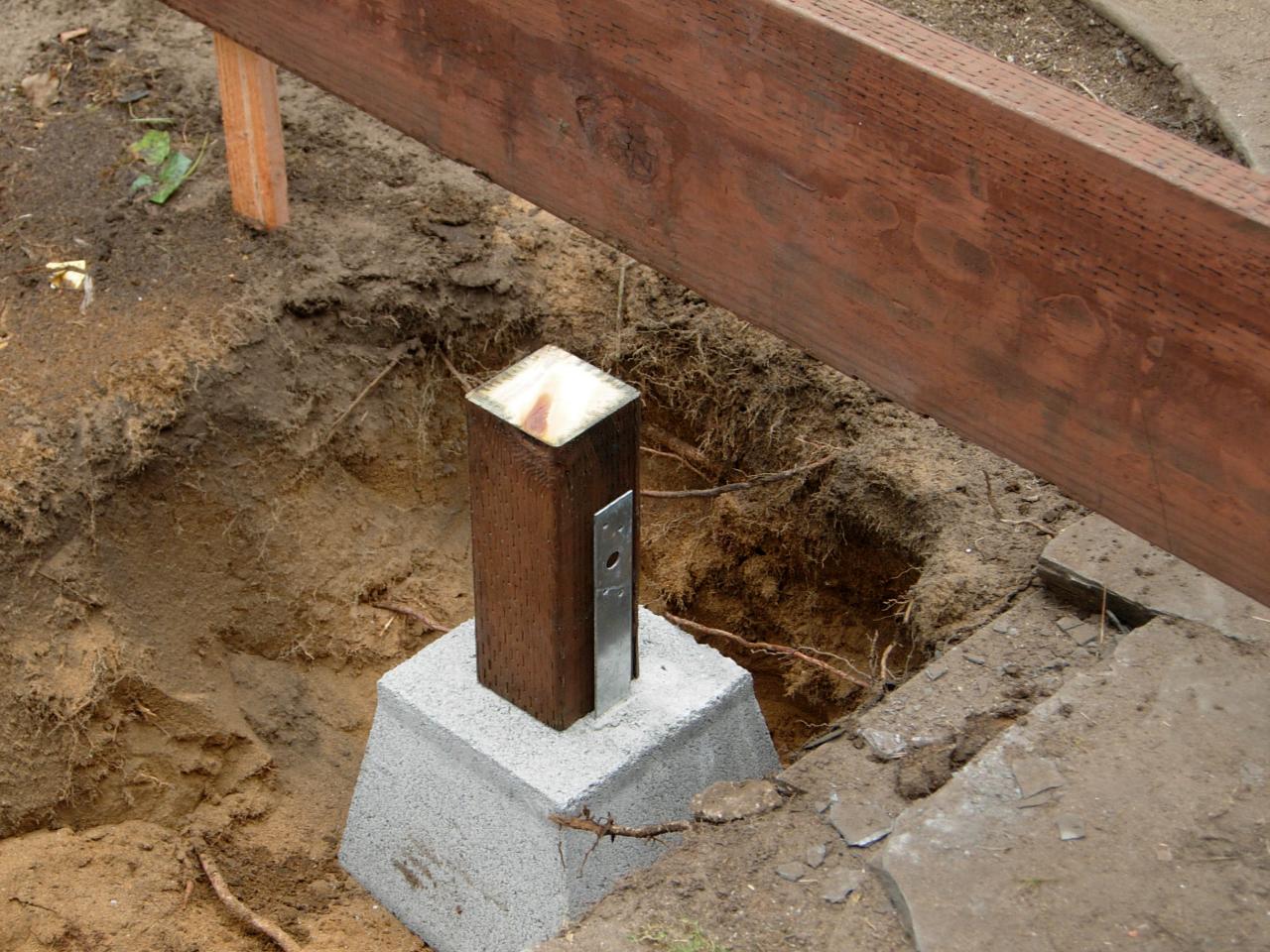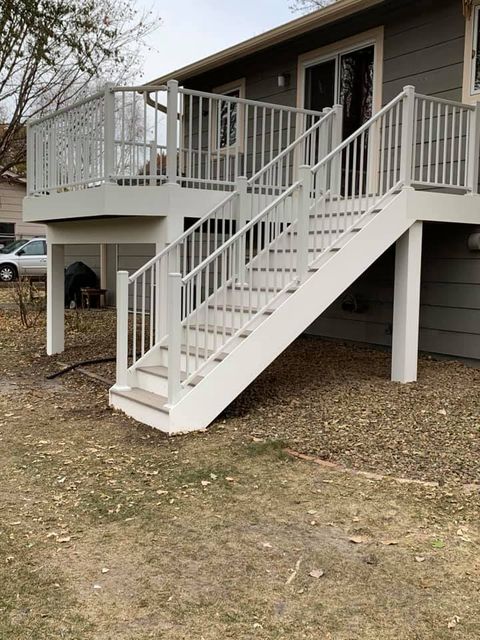Choosing the Right Deck Footings for Stability and Toughness
When it concerns building a deck, among the most crucial choices you will certainly make is choosing the appropriate grounds for stability and longevity. The durability and security of your deck depend greatly on the sort of grounds you choose, as they provide the vital support and stability to stand up to the examination of time. With a myriad of alternatives available, it can be overwhelming to determine which footings are best fit for your particular demands. In this discussion, we will explore the different sorts of deck grounds, think about the important factors to consider when making a choice, and dive into the pros and cons of various options. By the end, you will have a more clear understanding of the options available and be better geared up to make an educated decision for your deck task.
Sorts Of Deck Footings
There are several kinds of deck grounds that can be made use of, each offering unique benefits and factors to consider. One common sort of footing is the concrete pier footing. These footings include a cylindrical opening loaded with concrete, which gives a solid foundation for the deck articles. Concrete pier footings are relatively simple to set up and supply exceptional security, making them a prominent choice for lots of deck projects.
An additional sort of ground is the helical stack footing. Helical heaps are steel shafts with helical plates affixed to them. These footings are mounted by screwing them into the ground, which develops a safe and secure structure for the deck. Helical pile footings are perfect for areas with tough dirt conditions, as they can be installed in almost any type of sort of dirt. They likewise permit simple modification and leveling of the deck if needed.
Additionally, some building contractors go with precast concrete grounds. These footings are made from resilient concrete and be available in numerous forms and dimensions to accommodate different deck designs. Precast concrete grounds are hassle-free to mount and provide a secure base for the deck structure.
Ultimately, an additional alternative is the post-in-anchor footing system. This sort of footing involves driving a steel support into the ground and affixing it to the deck message. It uses adaptability in terms of placing the deck messages and appropriates for decks with light-weight frameworks.
When picking the appropriate sort of deck footing, it is necessary to consider variables such as soil conditions, deck lots, and regional structure codes (Deck Footings). Consulting with an expert contractor or architectural engineer can aid ensure the suitable ground is picked for a risk-free and stable deck
Aspects to Take Into Consideration When Selecting Grounds
When choosing the appropriate footings for a deck, it is crucial to carefully consider various factors such as soil problems, deck load, and adherence to local building codes. These elements play a substantial role in ensuring the security and longevity of the deck framework.
Among the key elements to consider is the soil conditions. The sort of soil on which the deck will be built establishes the kind of grounds called for. Decks built on sandy or loose soils may require deeper footings to supply appropriate assistance and prevent settling. On the various other hand, decks developed on clay or large soils might need footings that can fit the dirt's propensity to increase and agreement.
An additional crucial aspect is the deck tons. The weight of the deck, consisting of the products made use of and any prospective live tons such as furnishings or celebrations, need to be considered when choosing footings. The grounds need to be developed to bear the weight of the deck and distribute it equally to stop any see type of structural problems or failures.
Finally, adherence to regional building regulations is vital. Structure codes vary from region to area, and it is necessary to adhere to the specific requirements established by the regional authorities. Deck Footings. These codes make certain that the deck is developed safely and meets the needed requirements for structural honesty and load-bearing ability
Concrete Grounds: Disadvantages and pros

When utilized as the foundation for a deck,Concrete footings supply several benefits and negative aspects. On the silver lining, concrete grounds provide excellent security and durability. Concrete is a solid and stiff product that can sustain heavy tons and stand up to various climate conditions. It likewise has a lengthy lifespan, making it a reliable selection for long-term usage.
Another benefit of concrete grounds is their flexibility. They can be poured into different sizes and shapes to fit numerous deck designs and setups. Concrete footings can be tailored to fit the certain needs and requirements of the deck framework.
However, there are likewise some drawbacks to using concrete footings. One major negative aspect is the cost and labor included in their setup. Concrete footings call for excavation and typically need the assistance of heavy machinery. This can enhance the general expense of the deck task and might call for expert aid.

Helical Piers Vs. Sonotubes: Which Is Much better?
In considering the foundation choices for a deck, the comparison in between helical piers and sonotubes is important in establishing the superior option. Helical piers, also referred to as screw heaps, are steel shafts with helical plates connected to them. They are twisted into the ground making use of hydraulic equipment, supplying a resilient and stable foundation for the deck. On the other hand, sonotubes are cylindrical types constructed from cardboard or fiber material that are loaded with concrete. They are positioned in an opening went into the ground and give assistance for the deck.
When it pertains to stability and durability, helical piers have the top hand. The helical plates on the piers develop a solid grip with the soil, moving or stopping any kind of motion of the deck. This is especially beneficial in areas with unpredictable or changing dirt conditions. Sonotubes, on the various other hand, depend exclusively on the concrete filling for stability, which may not supply the same degree of toughness and resistance.
In terms of installation, helical piers are fairly less complicated and faster to mount contrasted to sonotubes. Your Domain Name The hydraulic machinery made use of to twist the piers right into the ground guarantees a efficient and quick procedure. Sonotubes, on the other hand, need excavating openings and official source putting concrete, which can be lengthy and labor-intensive.
In addition, helical piers are an even more functional choice. If needed, they can be used in various soil conditions and can be changed or strengthened. Sonotubes, on the other hand, might call for additional support, such as rebar, in particular soil problems or areas with high load needs.
Picking the Right Footings for Your Deck's Measurements
For optimal structural integrity, it is necessary to meticulously pick the ideal grounds that straighten with the measurements of your deck. The measurements of your deck, including its height, size, and size, play a substantial role in determining the type and dimension of grounds needed.
When choosing footings for your deck, it is vital to take into consideration the load-bearing capability of the dirt. The weight of the deck, incorporated with the weight of any kind of furnishings or people on it, applies a considerable force on the grounds (Deck Footings). It is vital to pick footings that can sufficiently support this weight without sinking or moving over time.
Bigger decks with higher dimensions require bigger footings to give enough stability and assistance. The form of the grounds, whether they are square or rounded, depends on the style and layout of the deck.
Verdict
In final thought, selecting the appropriate deck grounds is crucial for ensuring security and resilience. Elements such as the type of grounds, the deck's measurements, and the pros and disadvantages of different options must be taken into consideration.
These grounds are composed of a round hole loaded with concrete, which supplies a strong foundation for the deck messages. Concrete pier grounds are relatively simple to set up and offer outstanding stability, making them a prominent option for lots of deck tasks.
Precast concrete grounds are hassle-free to mount and provide a secure base for the deck framework.
It uses versatility in terms of placing the deck articles and is appropriate for decks with lightweight frameworks.
Concrete footings offer several benefits and disadvantages when made use of as the structure for a deck.